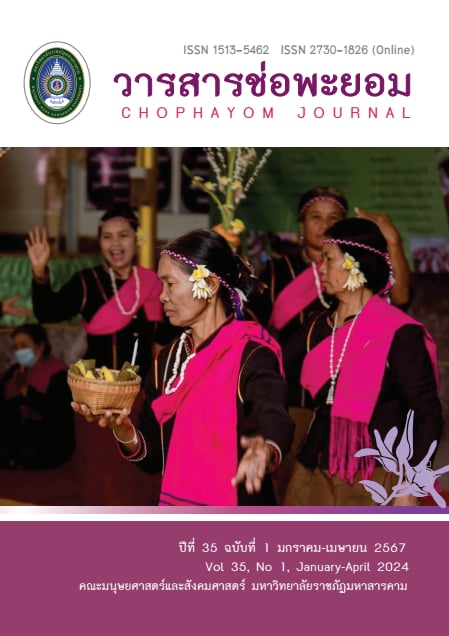Folk art : Minquan “painting tiger Village” The dissemination and reflective study of traditional painting skills
Keywords:
Folk Art : Minquan Painting Tiger Village, The dissemination, Reflective Study, Traditional Painting SkillsAbstract
The three purposes of this research can be outlined as follows:1)To study historical background of Minquan painting of folk art in China. 2) To study current sittuations and problems of Minquan“ Painting Tiger Village”.3) To present guidelines for protection and development of Minquan“ Painting Tiger Village” In order to maximize first-hand information and conduct in-depth research, this study used qualitative research supported by participatory research, and surveys, observations and data from relevant literature and fields.Respondents included: 1) 4 Key Informant. 2) 12 Casual Informant. 3) 20 General Informant.
The results show that the folk art needs to explore new development paths from the establishment of the subject position, the protection of the living environment, and the excavation of universal elements.However, insufficient attention is still paid to the protection of folk art.The research subject of this paper, "Painting tiger Village", was originally a typical poor village on the eastern Henan plain, and the villagers have always maintained the tradition of folk painting.From the embryonic period of the 1960s to the 1960s and 1970s, a group of peasant painters in the village tried to change the poor and backward life difficulties through their own artistic talents, and finally achieved success. With the rapid development of the society, the village is facing a severe test, and various problems come one after another, which greatly restricts the development of folk art. People's attention is more on whether the economic benefits can be obtained, and what is the essence of the development of Huhu Village, which leads to the bottom soon after the rise.
Keywords: Folk Art : Minquan Painting Tiger Village, The dissemination, Reflective Study, Traditional Painting Skills
References
Cao Mengjuan. (2019). Research on the novel elements of Customs and righteousness [D]. Qingdao University, DOI:10.27262/d.cnki.gqdau. 2019.001843.
[England] Victoria D. Alexander. (2013). The Sociology of the Arts [M]. Nanjing: Jiangsu Phoenix Fine Arts Publishing House, p. 85
Liu Mingli. (2015). Analysis of the origin, inheritance and Development of Chinese folk Art [J]. The Voice of the Yellow River, 2015 (24): 113.
Wang Yan. (2019). Research on the Integrated Development of Agriculture and Cultural Industry under the Rural Revitalization Strategy Review of Research on Modern Agricultural Development Strategy [J]. Journal of Botany, 54 (06): 810.
Downloads
Published
How to Cite
Issue
Section
License
Copyright (c) 2024 Chophayom Journal

This work is licensed under a Creative Commons Attribution-NonCommercial-NoDerivatives 4.0 International License.






